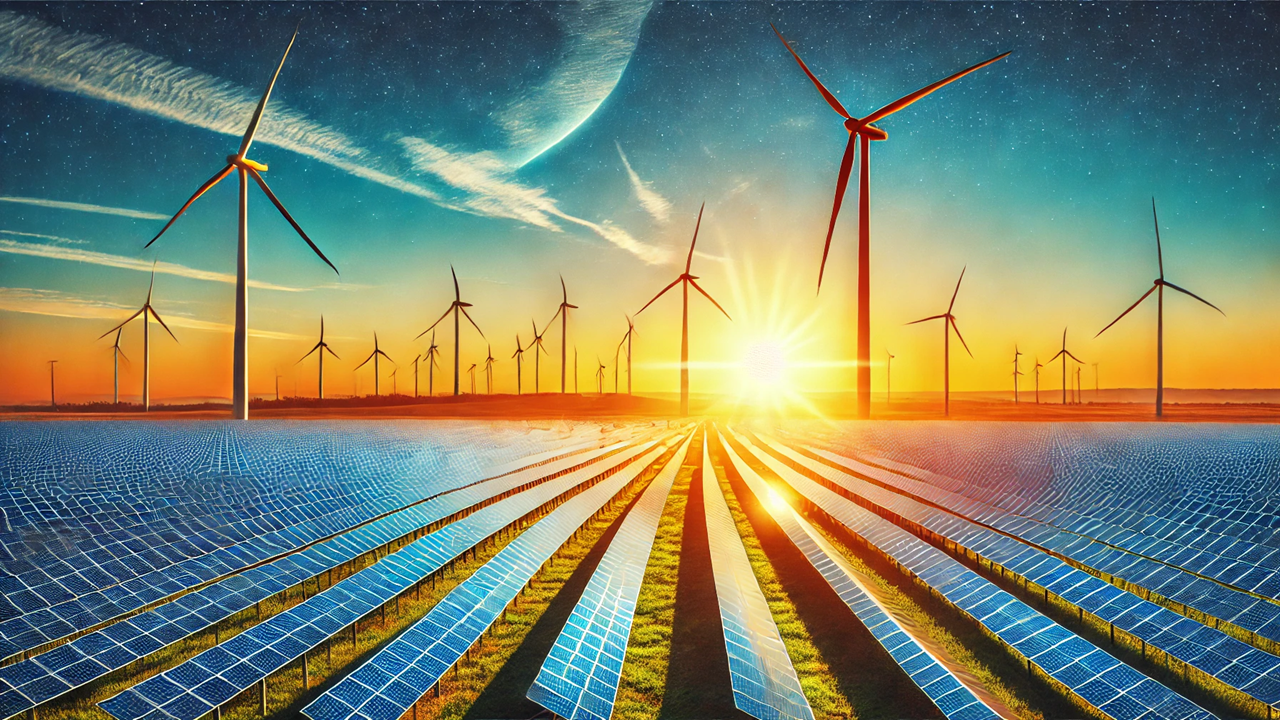Breaking Barriers: How Trade Policy Can Drive Renewable Energy Growth
A new report by the United Nations Conference on Trade and Development (UNCTAD), Powering Trade: Fine-tuning Trade Policy for Solar and Wind Energy Value Chains, reveals how trade policy can accelerate the global transition to renewable energy. It emphasizes the need to reduce trade barriers, lower tariffs, and foster regional integration to promote the growth of solar and wind energy technologies, particularly in developing countries. By enabling these nations to engage more in assembly and manufacturing, rather than just raw material exports, the world can better harness the potential of green energy technologies and achieve sustainable development.

The global shift to renewable energy is gaining momentum, but progress is slow. A recent report by the United Nations Conference on Trade and Development (UNCTAD) titled Powering Trade: Fine-tuning Trade Policy for Solar and Wind Energy Value Chains sheds light on the pivotal role trade policies can play in speeding up the transition. This report calls for immediate action to lower tariffs, reduce non-tariff barriers, and address trade imbalances, particularly in developing nations. These changes could unlock the full potential of solar and wind technologies, which are crucial to both combating climate change and fostering economic growth.
The Growing Demand for Green Energy
Solar and wind energy technologies are leading the renewable energy revolution. Their trade is expanding rapidly, helping to decarbonize the global electricity grid. However, despite this growth, these technologies have not advanced fast enough to replace fossil fuel-based energy sources. One of the key reasons for this is that many developing countries are stuck in traditional trade patterns. They export raw materials essential for producing solar panels and wind turbines but import most of the manufactured goods that drive these green technologies.
This imbalance prevents developing countries from fully benefiting from the green energy transition. By focusing solely on raw material exports, these nations miss out on the economic benefits of assembling and producing final products, which have much higher value. Addressing this disparity is essential for a more inclusive global renewable energy market.
High Trade Costs Hold Back Development
Another challenge highlighted in the UNCTAD report is the high trade costs associated with solar and wind energy value chains. Developing countries face tariffs on green energy goods ranging from 2.5% in Asia to as high as 7.1% in Africa. Non-tariff measures like customs controls and pre-shipment inspections add further costs. These barriers make renewable energy technologies more expensive, limiting their affordability and accessibility, especially in regions that need them the most.
Reducing these trade costs is key to making renewable energy technologies more affordable. By lowering tariffs on intermediate products, particularly those used in the manufacturing process, developing countries could increase their participation in the green energy value chain. For example, Africa, with its abundant labor and natural resources, could benefit from lower tariffs on intermediate goods, enabling it to develop industries focused on assembling solar and wind products.
Policy Solutions for a Global Green Energy Boost
To enhance the growth of renewable energy, the UNCTAD report calls for several policy adjustments. First, developed countries should reconsider their trade policies toward developing nations, ensuring they align with global goals for energy transition and sustainable development. Reducing tariffs and other trade barriers on green energy goods will help developing countries play a more significant role in global value chains.
Furthermore, fostering regional trade integration could provide additional opportunities for developing countries. In Africa and Latin America, intra-regional tariffs are notably higher than in other parts of the world. By lowering these tariffs and reducing non-tariff barriers within their regions, these countries could strengthen local green energy industries, boosting job creation and economic growth.
Another key recommendation is improving trade remedy mechanisms, such as those used to handle anti-dumping disputes. The current rise in trade defense measures, particularly against Asian traders, has the potential to disrupt the green energy sector. By creating more effective trade dispute resolution processes, countries can avoid unnecessary trade restrictions that could hinder the growth of renewable energy.
Unlocking Opportunities for Developing Nations
One of the most critical messages in the report is the opportunity for developing countries to move beyond raw material exports. By focusing on assembly and manufacturing, they can add significant value to their economies. For example, nations like India and Brazil have already established wind turbine assembly plants, creating jobs and generating more income than raw material exports alone.
Moreover, as the demand for renewable energy continues to grow, there is a pressing need for energy storage solutions, such as batteries, and the emerging market for green hydrogen. These complementary industries offer additional opportunities for developing nations to participate in the global green energy revolution.
In conclusion, the UNCTAD report emphasizes that while trade in renewable energy goods is growing, much more needs to be done to ensure an equitable and inclusive transition. By fine-tuning trade policies, lowering tariffs, and fostering regional integration, we can unlock the full potential of solar and wind energy technologies and create a more sustainable, inclusive future for all.
- FIRST PUBLISHED IN:
- Devdiscourse
ALSO READ
ADB Report: New Strategies Essential for Developing Countries to Harness Digital Creative Economy
The Struggle for Investment: How Landlocked Developing Countries Navigate Economic Challenges
GM Unveils PowerBank: Empowering Homes with Solar Energy
India's Wind Energy: A Global Powerhouse in the Making
Waaree Energies: A Powerhouse in Solar Energy Prepares for Landmark IPO










